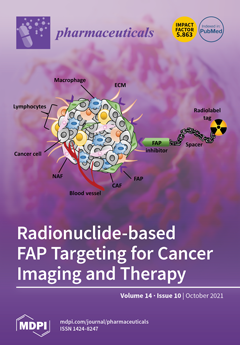Open AccessArticle
Macrosphelide A Exhibits a Specific Anti-Cancer Effect by Simultaneously Inactivating ENO1, ALDOA, and FH
by
Kyoung Song, Nirmal Rajasekaran, Chaithanya Chelakkot, Hun Seok Lee, Seung-Mann Paek, Hobin Yang, Lina Jia, Hee Geon Park, Woo Sung Son, Yu-Jin Kim, Joon-Seok Choi, Hae Min Jeong, Young-Ger Suh, Hwayoung Yun and Young Kee Shin
Cited by 2 | Viewed by 3210
Abstract
Aerobic glycolysis in cancer cells, also known as the Warburg effect, is an indispensable hallmark of cancer. This metabolic adaptation of cancer cells makes them remarkably different from normal cells; thus, inhibiting aerobic glycolysis is an attractive strategy to specifically target tumor cells
[...] Read more.
Aerobic glycolysis in cancer cells, also known as the Warburg effect, is an indispensable hallmark of cancer. This metabolic adaptation of cancer cells makes them remarkably different from normal cells; thus, inhibiting aerobic glycolysis is an attractive strategy to specifically target tumor cells while sparing normal cells. Macrosphelide A (MSPA), an organic small molecule, is a potential lead compound for the design of anti-cancer drugs. However, its role in modulating cancer metabolism remains poorly understood. MSPA target proteins were screened using mass spectrometry proteomics combined with affinity chromatography. Direct and specific interactions of MSPA with its candidate target proteins were confirmed by in vitro binding assays, competition assays, and simulation modeling. The siRNA-based knockdown of MSPA target proteins indirectly confirmed the cytotoxic effect of MSPA in HepG2 and MCF-7 cancer cells. In addition, we showed that MSPA treatment in the HEPG2 cell line significantly reduced glucose consumption and lactate release. MSPA also inhibited cancer cell proliferation and induced apoptosis by inhibiting critical enzymes involved in the Warburg effect: aldolase A (
ALDOA), enolase 1 (
ENO1), and fumarate hydratase (
FH). Among these enzymes, the purified ENO1 inhibitory potency of MSPA was further confirmed to demonstrate the direct inhibition of enzyme activity to exclude indirect/secondary factors. In summary, MSPA exhibits anti-cancer effects by simultaneously targeting
ENO1,
ALDOA, and
FH.
Full article
►▼
Show Figures






